General description
Solute carrier family 2, facilitated glucose transporter member 1 (UniProt P11166; also known as Glucose transporter type 1 erythrocyte/brain, GLUT-1, HepG2 glucose transporter, Human T-cell leukemia virus I and II receptor, Receptor for HTLV-1 and HTLV-2) is encoded by the SLC2A1 (also known as DYT9, DYT17, DYT18, EIG12, GLUT, GLUT1, HTLVR, GLUT1DS, PED) gene (Gene ID 6513) in human. Glucose transporters (GLUT-1 to GLUT-7) constitute a family of integral membrane glycoproteins that facilitate cellular glucose uptake. In addition to mediating glucose uptake in adult tissues, GLUT-1 is the predominant glucose transporter in embryonic and fetal tissues. Two forms of GLUT-1 are found in human frontal cortex, the 55 kDa form of GLUT-1 regulates import of glucose from blood to brain across the endothelial cells of the blood-brain barrier (BBB), whereas the 45 kDa form of GLUT-1 predominantly regulates nonvascular glial glucose uptake.
Immunogen
Epitope: pSer226 in the fourth cytoplasmic domain (Loop 6).
KLH-conjugated linear peptide corresponding to a fourth cytoplasmic domain (Loop 6) sequence of human GLUT-1 with phosphorylated Ser226.
Application
Peptide Inhibition Analysis: 2.0 µg/mL from a representative lot detected Ser226 phosphorylated GLUT-1 in lysates from PMA-treated HeLa cells. Pre-incubation of the antibody with the immunogen peptide, but not the correspoding non-phosphorylated peptide, blocked the detection of the phospho GLUT-1 band.
Western Blotting Analysis: An 1:200 dilution (5 µg/mL) from a representative lot detected TPA-induced phosphorylation of wild-type GLUT-1, but not GLUT-1 with S226A mution in lysates from Rat2 fibroblasts expsssing the respective constructs via retrovirus-mediated transfection (Courtesy of Dr. Richard C. Wang, UT Southwestern Medical Center, Dallas, TX).
Western Blotting Analysis: An 1:200 dilution (5 µg/mL) from a representative lot detected a time-dependent GLUT-1 Ser226 phosphorylation induction in serum-starved human umbilical vein endothelial cells (HUVECs) and human aortic endothelial cells (HAECs) upon VEGF treatment (Courtesy of Dr. Richard C. Wang, UT Southwestern Medical Center, Dallas, TX).
Western Blotting Analysis: A representative lot detected PKC activation-induced GLUT-1 Ser226 phosphorylation in human aortic endothelial cells (HAECs) upon TPA (Cat. No. 500582 & 524400) treatment only the in the absence, but not in the presence, of PKC inhibitor Go 6983 (Cat. No. 365251) (Lee, E.E., et al. (2015). Mol. Cell. 58(5):845-853).
Western Blotting Analysis: A representative lot detected a time-dependent GLUT-1 Ser226 phosphorylation induction in serum-starved human umbilical vein endothelial cells (HUVECs) upon VEGF or angiotensin II treatment (Lee, E.E., et al. (2015). Mol. Cell. 58(5):845-853).
Western Blotting Analysis: A representative lot detected comparable Ser226 phosphorylation induction of exogenously expressed wild-type GLUT-1 or K526E mutant in transfected Rat2 fibroblasts upon PKC activator TPA (Cat. No. 500582 & 524400) treatment (Cat. No. 365251) (Lee, E.E., et al. (2015). Mol. Cell. 58(5):845-853).
Western Blotting Analysis: A representative lot detected PKC activator TPA-induced GLUT-1 Ser226 phosphorylation in serum-starved HeLa, human primary cardiac endothelial cells, EA.hy926 human endothelial cells, and bEnd.3 mouse brain endothelial cells (Lee, E.E., et al. (2015). Mol. Cell. 58(5):845-853).
Western Blotting Analysis: A representative lot detected PKC-catalyzed Ser226 phosphorylation of GST fusion protein containing wild-type GLUT-1 Loop 6 (4th cytoplasmic domain) seuqnce, but not GST-Loop 6 fusions with R223P, R223Q, R223W, or S226A mutation, in in vitro kinase assays (Lee, E.E., et al. (2015). Mol. Cell. 58(5):845-853).
Western Blotting Analysis: A representative lot detected a time-dependent GLUT-1 Ser226 phosphorylation induction in serum-starved human aortic endothelial cells (HAECs) upon VEGF treatment (Lee, E.E., et al. (2015). Mol. Cell. 58(5):845-853).
Immunocytochemistry Analysis: A representative lot detected PKC activation-induced GLUT-1 Ser226 phosphorylation in the membrane ruffles of human umbilical vein endothelial cells (HUVECs) upon TPA (Cat. No. 500582 & 524400) treatment (Lee, E.E., et al. (2015). Mol. Cell. 58(5):845-853).
Note: Process lysate samples by warming at 50°C for 10 minutes prior to gel loading. Avoid heating samples at a temperature higher than 60°C, which can cause aggregation of the target protein.
This Anti-phospho GLUT-1 Antibody (Ser226) is validated for use in Western Blotting, Peptide Inhibition Assay, Immunocytochemistry for the detection of phospho GLUT-1.
Quality
Evaluated by Western Blotting in HeLa cell lysate.
Western Blotting Analysis: 2.0 µg/mL of this antibody detected Ser226 phosphorylated GLUT-1 in lysates from PMA-treated HeLa cells.
Target description
~50 kDa observed. A smeared banding pattern between 45-75 kDa can often be seen, representing target bands with varying degrees of glycosylation.
Other Notes
Concentration: Please refer to lot specific datasheet.
biological source: rabbit. Quality Level: 100. antibody form: affinity isolated antibody. antibody product type: primary antibodies. clone: polyclonal. purified by: affinity chromatography. species reactivity: mouse, human. species reactivity (predicted by homology): horse (based on 100% sequence homology), canine (based on 100% sequence homology), bovine (based on 100% sequence homology), Xenopus (based on 100% sequence homology), rat (based on 100% sequence homology), rabbit (based on 100% sequence homology). technique(s): immunocytochemistry: suitable, inhibition assay: suitable (peptide), western blot: suitable. NCBI accession no.: NP_006507. UniProt accession no.: P11166. shipped in: wet ice. target post-translational modification: phosphorylation (pSer226 ). Gene Information: human ... SLC2A1(6513). Storage Class Code: 12 - Non Combustible Liquids. WGK: WGK 1. Flash Point(F): Not applicable. Flash Point(C): Not applicable.Shipping Information:
Dry Ice Surcharge & Ice Pack Shipments: $40
More Information: https://cenmed.com/shipping-returns
- UPC:
- 41116010
- Condition:
- New
- Availability:
- 3-5 Days
- Weight:
- 1.00 Ounces
- HazmatClass:
- No
- MPN:
- ABN991
- Temperature Control Device:
- Yes












